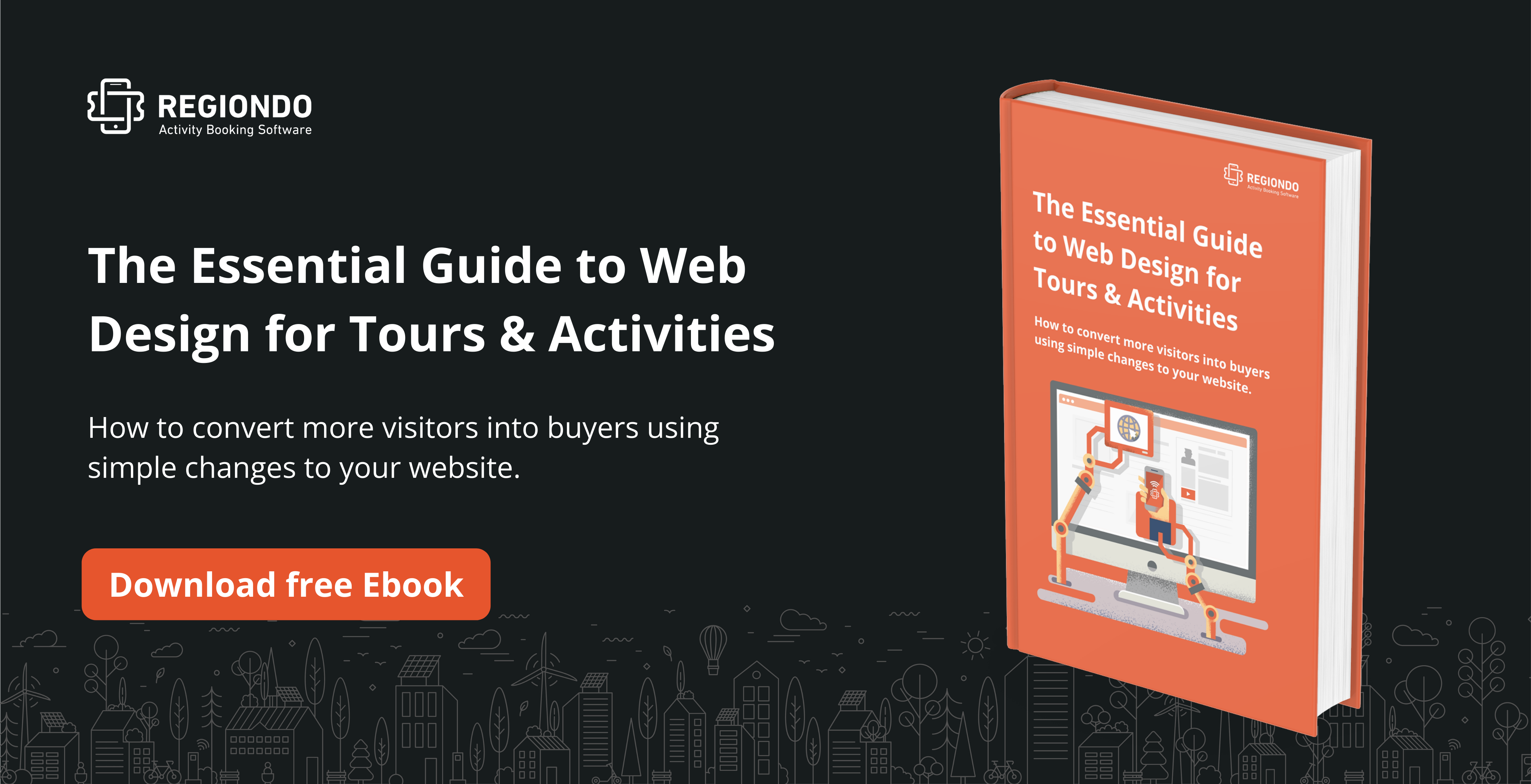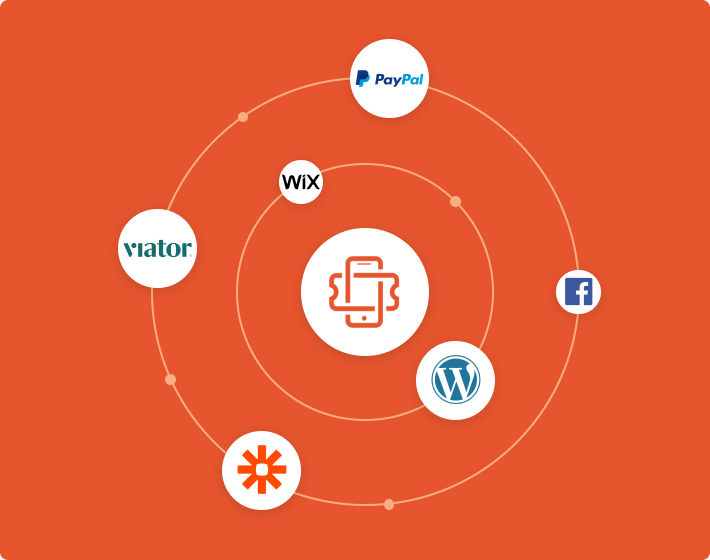The tours and activities business is an exciting industry to be part of but certainly comes with its own hurdles. As a result of the Covid-19 pandemic, many tourism organizations are sadly struggling to stay afloat. As we return to a new normal, it’s imperative to boost your revenue in order to stay financially sound.
Looking for ways to increase sales that are both quick and easy to implement? Monitoring and improving conversion on your website would be our recommendation!
What Are Website Conversions?
With conversions, we mean the desired action or goals of visitors on your website. You may have 1 macro-goal and several micro-goals. An example of a macro-goal could be online bookings whereas a micro-goal could be email sign-ups for your newsletter. So, how do you track this?
Let’s say you have 100 visitors to your website and 5 of them make a booking. This means that you have a booking conversion rate of 5%. Of these 100 visitors, 10 signed up to your newsletter. Therefore your newsletter conversion rate is 10%. Essentially, the formula is the total number of completed desired actions/number of visitors x 100.
Sounds simple enough, right? But how can we persuade those who are on your website to click where you want them to? Let’s take a look at our top tips on how to increase your website conversions.
5 Tips to Increase Website Conversions for Tours & Activities
1. Excite visitors with amazing imagery
Examine your website. This is your virtual shop front and should be attracting and enticing people to book with you 24 hours a day, 365 days a year. Improving your content can increase your conversion rates dramatically.
We are incredibly fortunate to work in an industry that is visually appealing. Make sure that your images are of high quality and show people participating in your activity or service. Are you selling city segway tours? Include a group photo, a shot of the tour in action, an image of the segway itself, and close-ups of people enjoying themselves. Avoid using stock photos as this will be viewed as inauthentic and not representative of your product.
2. Write cool copy
Now that you have images sorted, take a look at your product/service descriptions and home page text. Make sure that you include at least 3 Unique Selling Points as to why the customer should book with you, and not take their business elsewhere.
Have you been doing this longer than other providers? Do you have a special license or certification that others don’t have? Include everything that differentiates you from the competition and that makes you stand out.
Always include a story behind your company and products. Watch marketing consultant Simon Sinek talk about Starting with Why? He claims that people don’t buy what you do, they buy why you do it. You can incorporate this into your website by explaining to your visitors why you do what you do. This personal element will surely help you to increase your conversions and add an extra level of authenticity to your brand.
3. Test, test, and test some more
Not sure which imagery works best or if you should change the text placement on your product page? No problem! A/B testing will be your new best friend. You can set up two different variations of a landing page and send an equal amount of traffic to each.
The global travel booking abandonment rate in 2019 averaged 90.74%. Use Google Analytics to see when people leave your website, and play around with testing to see if you can decrease your abandonment percentages.
Are people leaving when they see the final price? Maybe you should try highlighting the final amount in an earlier step of the customer journey. Are people leaving when they arrive at the booking form? Test a different layout with fewer questions and see if it works better.
4. Build Trust
When it comes to tours and activities, you are responsible for the safety of your guests. Potential customers may have lots of questions about the safety and security of your product/service. Are you up to date with safety regulations? Are your staff medically trained? Answer as much as you can in the individual product descriptions and also include a Frequently Asked Questions page to anticipate any blockers to booking.
Another way to build trust is to allow customers to share previous experiences. Over 90% of people planning travel read online reviews. Don’t make your visitors go off your page to search for them! Create your own review system where reviews from your clients can go live on your website. Make sure that you ask all of your clients to contribute by including it in your follow up emails and mentioning it on-site. You can also integrate your TripAdvisor profile with your website by using the free widget extension.
5. Remove Booking Pain Points
Actively search for any pain points – any areas that do not lead the visitor to convert. Imagine you are the visitor. You spend some time on the website, and finally decide on the product or service you would like to purchase. You get to the order page and there is a long and complicated form to fill in, requiring registration and a password amongst other seemingly irrelevant information. What do you do? Leave the website and find another provider.
Users do not like long forms so your booking form needs to be simple and easy to understand. You can always add a comments section and reach out to the person after booking if you require further information. Don’t require registration before purchase – this will lose you business. Provide the option to purchase as a guest, and offer registration on the booking confirmation page.
Want To See How It’s Done?
Let’s take a look at Canyon Park, an outdoor activity operator in Tuscany, Italy. They provide a variety of outdoor activities from SUP yoga to Canyon Ziplining.
Their SUP product and booking pages include imagery of people enjoying the activity and descriptive text that increases the desire to book!

By mentioning that the Straits of Cocciglia are a unique natural phenomenon only accessible by Stand Up Paddleboards, they are immediately highlighting their Unique Selling Points. They describe exactly how the activity will work and who can participate – anticipating any pain points and addressing them.
Now let’s take a look at their booking form. Simple, uncomplicated, and quick to fill in – nothing to annoy the potential customer that will make them leave the page.

There are only 3 required fields, offering a great example of how to create an easy and stress-free booking journey for your customers which will ultimately increase your revenue.
Conclusion
Monitoring and improving your website conversions is an on-going process that you should measure on a regular basis. By following our top tips above, you will discover what does and doesn’t work and constantly improve your conversion rates.
Our final tip? Know your customer and why they are coming to you. As long as you provide the best solutions and understand their booking pain points, you will never miss an opportunity again.
You might also like:
- How to Increase Website Traffic for Tours and Activities
- The Best Content Management Systems For Tour And Activity Operators
- Online Fraud and How to Protect Yourself with an SSL Certificate
- Website Best Practices for Tour and Activity Companies
- The 5 Types Of People Who Visit Your Site And How To Sell To Them
- Why Tour and Activity Operators Should Invest in a Great Website





